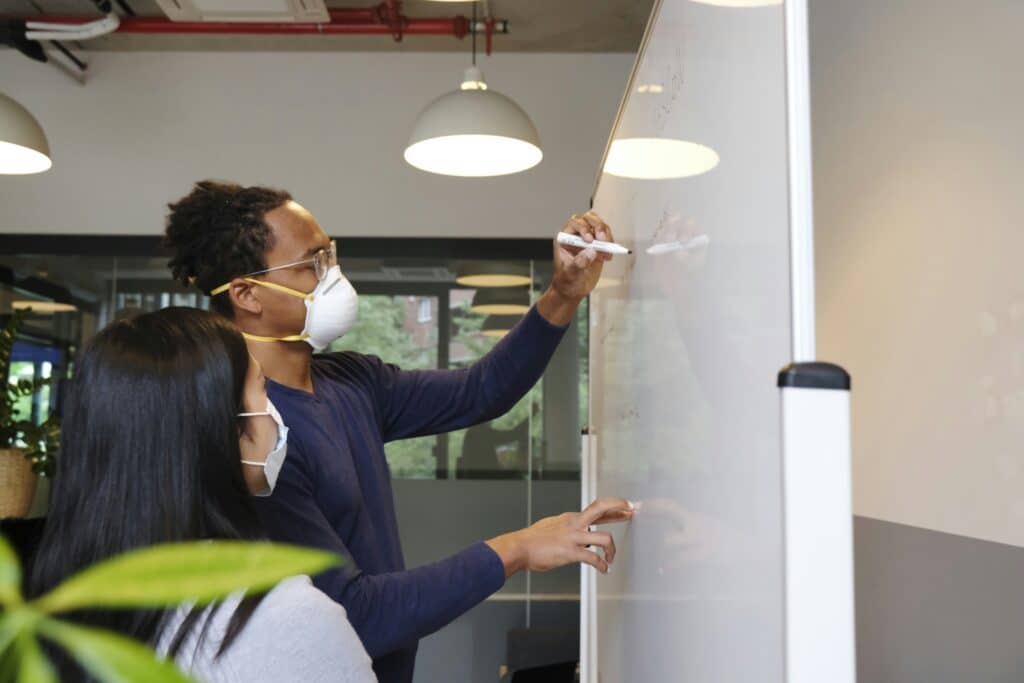It’s not uncommon for learners to find themselves stuck at a certain point, unsure of the next step forward or how to reach their desired learning goals swiftly. That’s where effective roadmap and timeline creation comes into play. 🚀

Roadmaps and timelines, when designed well, can serve as reliable navigation tools. They can guide learners through their learning journey, offering a clear path towards their goals. And it’s not just about reaching the destination. It’s about reaching it faster, and more efficiently. Sounds exciting, right? 😃
In this article, we will delve deep into the art and science of crafting successful roadmaps and timelines for learners. We will explore what these tools entail, why they are critical in modern learning environments, and how you can create them to foster accelerated learning.
Why Roadmaps and Timelines?
Think of roadmaps and timelines as your personal GPS in the realm of learning. They don’t just show you the final destination (i.e., the learning goal). They provide you with the most efficient route, give you an estimated time of arrival, warn you of potential roadblocks, and suggest detours when necessary. Essentially, they make your learning journey less daunting and more manageable.
But that’s not all. When used correctly, roadmaps and timelines can also foster a sense of ownership among learners. They empower learners to take charge of their learning, instill motivation, and encourage them to stay on track.
Can you see why these tools are nothing short of a game-changer in today’s learning ecosystem? 😮
Dissecting the Ingredients of Successful Roadmaps and Timelines
Before we dive into the how-to’s of creating roadmaps and timelines, it’s important to understand their key elements. What makes a roadmap or timeline effective? What components should you consider while designing these tools?
Don’t worry, we will unravel all these questions and more, equipping you with a solid understanding of these vital learning aids. This will set the stage for the subsequent sections, where we will guide you through the practical steps of creating these tools.
By the end of this comprehensive guide, you’ll be well-versed in harnessing the power of roadmaps and timelines to propel learners towards their goals faster. No more wandering aimlessly in the maze of learning. It’s time to chart a clear path forward! 🎯
Whether you’re a learning professional, a teacher, or a self-learner looking to streamline your learning journey, this guide is tailored just for you. So, buckle up and get ready for an enlightening journey. Your roadmap to success begins here!
🚀 The Power of Roadmaps and Timelines in Learning Journey
One of the keys to successful learning is having a clear direction. Roadmaps and timelines play a crucial role in guiding learners towards their objectives. They provide a step-by-step framework that outlines the path to achieving a particular goal, making the learning process much more structured and manageable. This article will delve into the importance of these tools and how they can be designed effectively to accelerate learners’ progress.
First, let’s explore what roadmaps and timelines are. Essentially, a learning roadmap is a strategic plan that identifies the specific skills and knowledge a learner needs to acquire to achieve their objectives. It’s a guide that paves the way from where the learner is now to where they want to be. A timeline, on the other hand, provides a chronological structure to the roadmap. It outlines the time required to complete each task or module, helping learners manage their time effectively.
Roadmaps and timelines are not only applicable in educational settings. They are also widely used in various industries, particularly in project management and product development. These tools are essential in organizing tasks, allocating resources, and tracking progress. They are just as useful in a learning context, where they can support learners in managing their learning journey and tracking their progress towards their goals.
🎯 How to Develop an Effective Learning Roadmap
Creating a learning roadmap involves a series of steps, each crucial in ensuring that the roadmap is comprehensive, practical, and effective. The first step is to identify the learning objectives. These are the ultimate goals that the learner aims to achieve by the end of the learning journey. These objectives should be specific, measurable, achievable, relevant, and time-bound (SMART).
The next step is to outline the learning path. This includes identifying the specific skills and knowledge the learner needs to acquire to achieve their objectives. It’s important to break these down into manageable chunks or modules to make the learning process more manageable. Each module should have its own set of objectives that align with the overall learning objectives.
Finally, the roadmap should include a timeline that outlines when each module should be completed. This helps learners manage their time effectively and ensures that they stay on track towards achieving their goals. Below is a simple example of what a learning roadmap might look like.
| Module | Learning Objectives | Completion Date |
|---|---|---|
| Module 1: Introduction to Programming | Understand the basics of programming and write simple programs. | Week 2 |
| Module 2: Object-Oriented Programming | Understand the principles of object-oriented programming and apply them in programming tasks. | Week 4 |
| Module 3: Data Structures and Algorithms | Understand and apply various data structures and algorithms in solving programming problems. | Week 6 |
🎬 Using Technology to Create Interactive Roadmaps and Timelines
In today’s digital age, technology plays a crucial role in enhancing the learning process. There are various online tools and software that can be used to create interactive and visually appealing roadmaps and timelines. These tools not only make the planning process easier but also enhance learner engagement.
One such tool is Trello, an online project management tool that can be used to create learning roadmaps. It allows you to create boards for each module, where you can add tasks, deadlines, and progress trackers. Another tool is TimelineJS, a tool that allows you to create interactive timelines with multimedia features.
If you want to learn more about how to use these tools, check out the following YouTube video: “How to Use Trello for Project Management” by Trello. It provides a comprehensive tutorial on how to set up and use Trello for project management, which can be applied to creating learning roadmaps as well.
🔑 Key Benefits of Using Roadmaps and Timelines in Learning
Using roadmaps and timelines in learning has several benefits. First, they provide a clear direction and structure to the learning process. By outlining the path to achieving the learning objectives, learners can focus on what they need to learn and when. This eliminates the confusion and overwhelm that can come with learning new skills or knowledge.
Second, roadmaps and timelines promote self-directed learning. They empower learners to take charge of their own learning journey, allowing them to learn at their own pace and in their own way. This not only enhances their learning experience but also promotes lifelong learning.
Finally, roadmaps and timelines enable progress tracking. They provide a visual representation of where the learner is in their learning journey and how far they’ve come. This can boost motivation and promote a sense of accomplishment.
💡 Final Thoughts
In a world where learning is increasingly becoming self-directed, roadmaps and timelines are more important than ever. They provide a structured and manageable approach to learning, empowering learners to reach their goals faster. Whether you’re an educator designing a curriculum, a learner planning your learning journey, or a project manager overseeing a team’s progress, these tools can significantly enhance productivity and efficiency.
Remember, the key to an effective roadmap or timeline is specificity. Clearly define your learning objectives, break down your learning path into manageable chunks, and set realistic deadlines. And don’t forget to leverage technology to make the planning process easier and more interactive.
So go ahead and chart your path to success. With a clear roadmap and timeline, you’re well on your way to achieving your learning goals faster than you thought possible. Happy learning!
Conclusion
In conclusion, as we wrap up this comprehensive discussion, it is pivotal to reemphasize the significance of the main points dissected during the course of the article. The objective has been to take the complexity of IT and engineering and present it in a digestible format, hopefully achieving this through a detailed yet simplified discourse.
We began by exploring the intricate world of software engineering, highlighting the principal constituents such as software design, coding, software testing, and maintenance. Diving into the depths of each component, we emphasized the importance of writing clean and efficient code, a practice that ensures the longevity and functionality of a software product. We also underscored the critical role of software testing in delivering high-quality software that meets user requirements and expectations. 👨💻
Next, we delved into the fascinating realm of Information Technology (IT), unraveling its multifaceted nature. This comprehensive exploration ranged from understanding networks, databases, cloud services, and the instrumental role of IT in businesses and organizations. The focus was on how IT supports decision-making processes, communication, collaboration, and the overall operational efficiency within an organization. 🌐
In the midst of our discourse, we maintained a thread of the inherent interconnection between software engineering and IT. We established the foundation that software engineering is a subset of IT that focuses on developing and maintaining software systems.
It is important to remember that this article is not a one-off conversation. Rather, it is an invitation to engage, discuss and further explore the myriad complexities and wonders of the IT and software engineering world. This article has hopefully acted as a catalyst to spark your curiosity, encouraging further exploration and study into these exciting and rapidly evolving fields. 🚀
I encourage you to share this article within your networks, especially with those who might benefit from this content. Let’s keep the conversation going. Leave a comment below and share your thoughts, experiences, or questions. Let’s learn and grow together in this amazing world of IT and software engineering.
For further reading and research, I recommend the following sources:
1. International Society for Technology in Education
2. Association for Computing Machinery’s curriculum recommendations
3. British Computer Society
Don’t forget that in the world of technology, continuous learning and staying updated with the latest trends is the key to success. Happy reading and researching!
Remember: “The only way to do great work is to love what you do.” – Steve Jobs. Let’s keep our passion for technology burning and continue to create, innovate, and transform the world! 🔥
Tags: #SoftwareEngineering #InformationTechnology #Coding #SoftwareTesting #CloudServices
References:
1. International Society for Technology in Education. (n.d.). Retrieved from https://www.iste.org/standards/for-students
2. Association for Computing Machinery. (n.d.). Curriculum Recommendations. Retrieved from https://www.acm.org/education/curricula-recommendations
3. British Computer Society. (n.d.). Retrieved from https://www.bcs.org/



